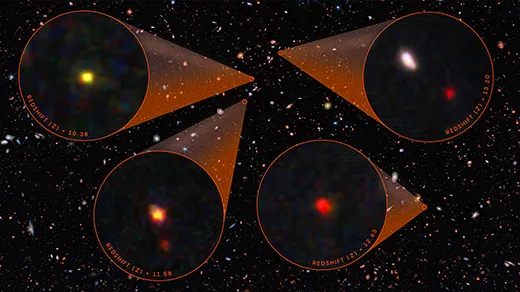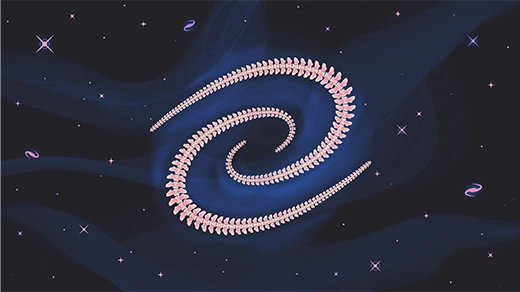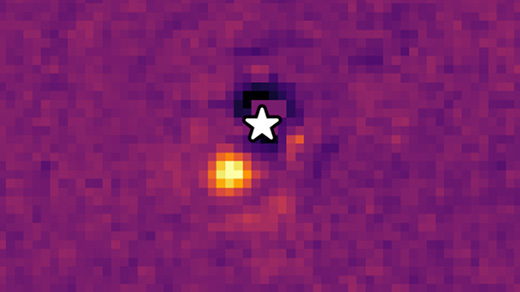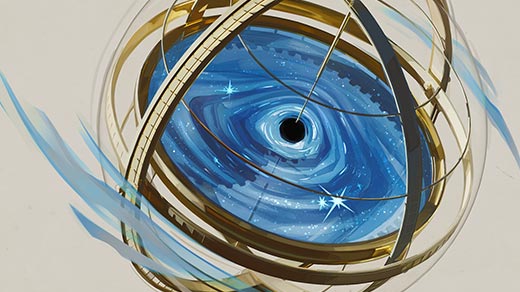What's up in
Astronomy
Latest Articles
Standard Model of Cosmology Survives a Telescope’s Surprising Finds
Reports that the James Webb Space Telescope killed the reigning cosmological model turn out to have been exaggerated. But astronomers still have much to learn from distant galaxies glimpsed by Webb.
The Year in Physics
In a year filled with sweet new observations in astronomy and tantalizing breakthroughs in condensed matter physics, the brand-new space telescope takes the cake.
The Enduring Mystery of the Dragonfly 44 Galaxy
A growing catalog of huge but dim galaxies such as Dragonfly 44 is forcing astronomers to invent new theories of galactic evolution.
A Dream of Discovering Alien Life Finds New Hope
For Lisa Kaltenegger and her generation of exoplanet astronomers, decades of planning have set the stage for an epochal detection.
Webb Space Telescope Snaps Its First Photo of an Exoplanet
The grainy image of a “super-Jupiter” is a sign of what’s to come as the telescope’s exoplanet observations ramp up.
What Drives Galaxies? The Milky Way’s Black Hole May Be the Key.
Supermassive black holes have come to the fore as engines of galactic evolution, but new observations of the Milky Way and its central hole don’t yet hang together.
Two Weeks In, the Webb Space Telescope Is Reshaping Astronomy
In the days after the mega-telescope started delivering data, astronomers reported new discoveries about galaxies, stars, exoplanets and even Jupiter.
The Astrophysicist Who Sculpts Stars Before They Are Born
Nia Imara is working to understand the mysterious clouds of gas and dust that collapse into stars.
Astronomers Reimagine the Making of the Planets
Observations of faraway planets have forced a near-total rewrite of the story of how our solar system came to be.






![Image of a spiral galaxy strewn with ribbons of pink light.]](https://www.quantamagazine.org/wp-content/uploads/2022/07/NGC7496_520x292.jpg)

![An array of images of protoplanetary disks with bright suns at the centers surrounded by rings, arcs, filaments and spirals.]](https://www.quantamagazine.org/wp-content/uploads/2022/06/Planet-Formation_520x292.jpg)